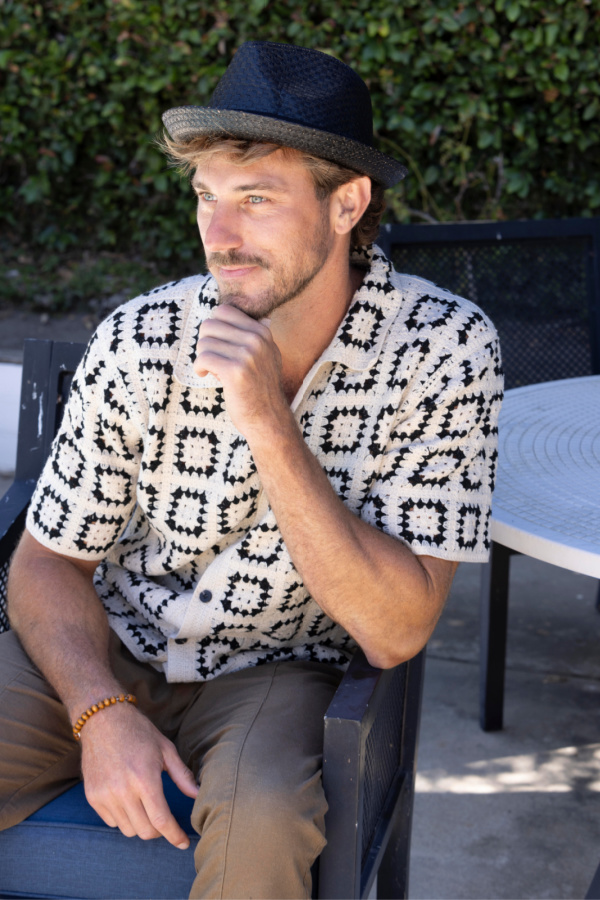
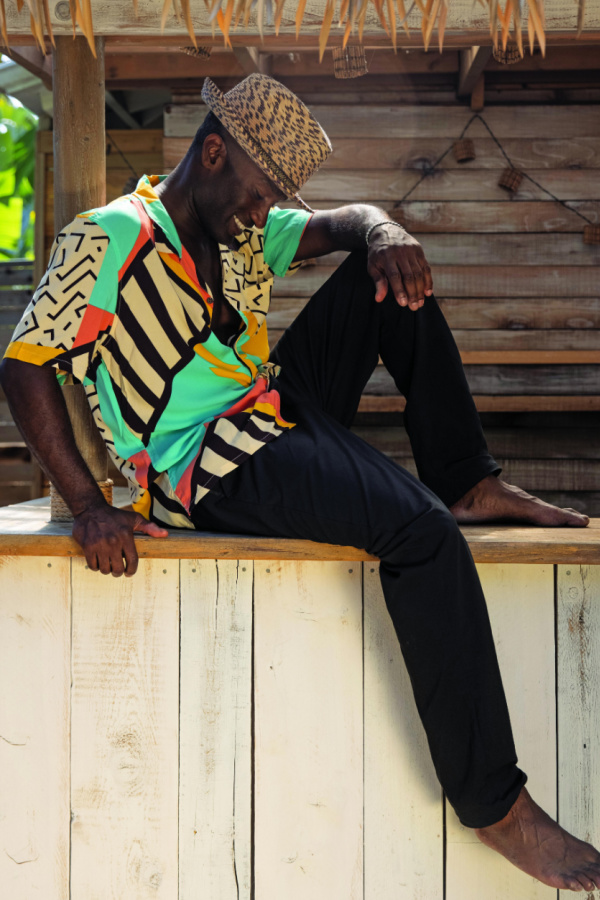
The Rise of the Fedora in Men’s Fashion
The Fedora hat, often associated with elegance and sophistication, first emerged in the late 19th century. Its rise in popularity can be traced back to the 1880s when it was initially worn by women, particularly in the play “Fédora” by Victorien Sardou.
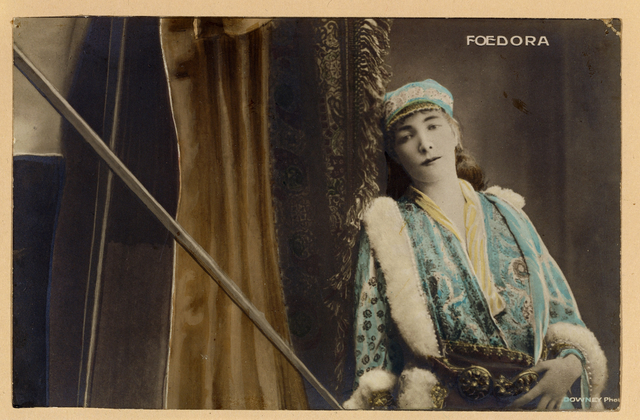
The hat’s design, characterized by a soft brim and indented crown, quickly caught the attention of men, who adopted it as a staple accessory.
The Fedora transitioned from a theatrical prop to a fashionable item, becoming a symbol of the modern man in the early 20th century.
As the 1900s progressed, the Fedora became entrenched in various social classes and circles, particularly among the urban elite. It was often associated with affluence and sophistication, making it a popular choice among gentlemen attending formal events.

The hat’s versatility allowed it to be worn with various outfits, from tailored suits to more casual attire. This adaptability contributed significantly to its rise, as men sought accessories that complemented their evolving styles without sacrificing elegance.
By the 1920s and 1930s, the Fedora had solidified its status in men’s fashion. It became a defining accessory for the dapper gentleman, often seen in the company of a well-tailored suit and polished shoes.
Its popularity was further fueled by its association with notable figures of the time, including gangsters and Hollywood stars, who wore it as a statement of style and power. This era marked the beginning of the Fedora’s legacy, paving the way for its enduring place in men’s wardrobes.
The Evolution of Men’s Fedora Hat
The evolution of the Fedora hat reflects broader changes in society, fashion, and culture. Initially, the Fedora was made from felt, typically wool or beaver fur, which provided warmth and structure. As fashion progressed, so did the materials used to create these hats.
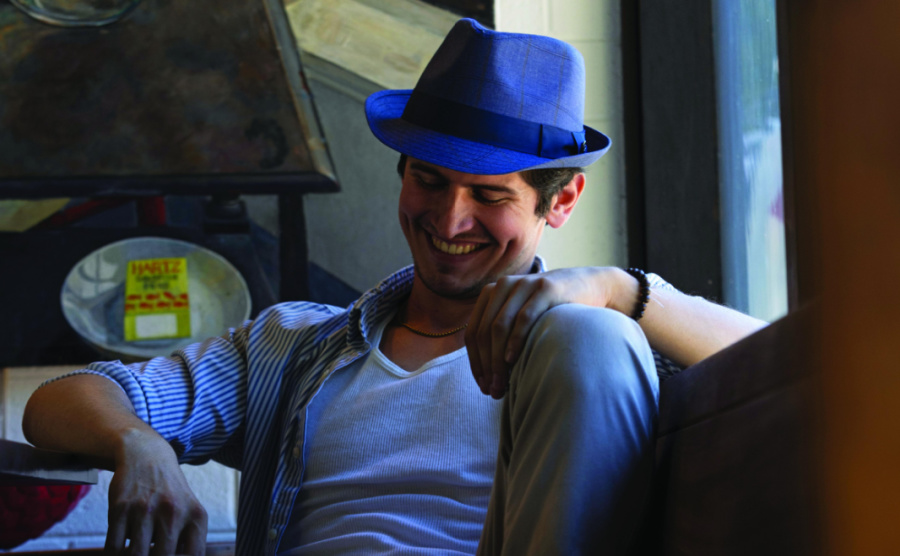
The mid-20th century saw the introduction of lighter fabrics, such as straw and cotton, making the Fedora suitable for a wider range of climates and occasions.
This adaptability not only broadened its appeal but also allowed men to express their personal style more freely.

Throughout the decades, the shape and style of the Fedora have undergone several transformations. The 1940s brought a more structured silhouette, with sharper angles and a taller crown becoming fashionable. This version of the Fedora was often paired with a trench coat, creating an iconic image of the suave detective or the stylish man about town. Conversely, the 1960s and 1970s saw a shift towards a more relaxed aesthetic, with softer, floppy brims and wider crowns emerging as popular choices. This evolution allowed the Fedora to remain relevant through changing trends and tastes.
In recent years, the Fedora has experienced a resurgence, now available in various styles, colors, and materials. Contemporary designers have embraced its classic design while infusing modern elements, making the Fedora accessible to a younger generation. As a result, the Fedora has been reinvented in countless ways, from casual summer styles to high-fashion runway pieces. This evolution demonstrates the Fedora’s remarkable ability to adapt and endure in the ever-changing world of men’s fashion.
Iconic Men who Wore Fedoras
Throughout history, many iconic figures have donned the Fedora, cementing its status as a symbol of style and sophistication. One of the most notable is Frank Sinatra, whose signature look often included a well-tailored suit and a Fedora perched at a jaunty angle. Sinatra embodied the charm and charisma associated with the Fedora, becoming a cultural icon of the 20th century. His influence extended beyond music; he became a style reference for men seeking to emulate his debonair persona.
Another legendary figure is Humphrey Bogart, whose portrayal of tough, yet suave characters in films like “Casablanca” and “The Maltese Falcon” helped popularize the Fedora in cinema. Bogart’s rugged masculinity, paired with the elegance of the Fedora, created an unforgettable image that many aspired to replicate. His influence on film and fashion continues to resonate, as the Fedora became synonymous with the archetypal leading man in Hollywood.
Moreover, in the modern era, celebrities like Johnny Depp and David Beckham have embraced the Fedora, showcasing its versatility and enduring appeal. Depp often pairs the Fedora with eclectic outfits, reflecting his unique style, while Beckham opts for a more polished, tailored look. Their choices highlight how the Fedora transcends generations, appealing to both classic and contemporary tastes. These iconic figures have contributed to the Fedora’s legacy, ensuring its place in the annals of fashion history.
The Men’s Fedora in Pop Culture
The Fedora’s impact on pop culture cannot be overstated, as it has appeared in countless films, television shows, and music videos over the decades. Its association with the film noir genre is particularly noteworthy, as many leading men wore Fedoras, enhancing their mysterious and sophisticated personas. This association has ingrained the Fedora into the fabric of cinematic history, making it a go-to accessory for characters ranging from detectives to gangsters. The visual impact of the Fedora has made it an enduring symbol of intrigue and charm.
Television has also played a significant role in solidifying the Fedora’s cultural significance. Iconic characters such as Don Draper from “Mad Men” have reintroduced the Fedora to modern audiences, showcasing its timelessness and relevance. Draper’s character, a suave advertising executive in the 1960s, often sported a Fedora, reflecting the era’s fashion and adding depth to his character. The show’s success reignited interest in mid-century fashion, prompting a resurgence of the Fedora in contemporary wardrobes.
The music industry has not been left out, either. Artists like Pharrell Williams and Bruno Mars have embraced the Fedora, incorporating it into their distinctive styles. This modern embrace has contributed to a renewed fascination with the Fedora among younger generations, who see it as a bold accessory that adds character to any outfit. The Fedora’s presence in pop culture continues to evolve, ensuring that it remains a relevant and stylish choice for the modern man.
Modern Interpretations of the Fedora
In today’s fashion landscape, the Fedora has undergone a remarkable transformation, with designers reimagining its classic silhouette to appeal to contemporary sensibilities. Modern interpretations often feature unique materials, colors, and embellishments, allowing individuals to express their personal style more creatively. From vibrant hues to playful patterns, the Fedora has transcended its traditional roots, making it a versatile accessory for various occasions, from casual outings to formal events.
Street style has played a significant role in the Fedora’s resurgence, with fashion influencers and trendsetters incorporating it into their everyday looks. Wearing a Fedora with relaxed outfits, such as denim jackets or oversized sweaters, has become a popular way to add a touch of sophistication to casual attire. This fusion of styles reflects a broader trend in fashion where traditional items are recontextualized to fit modern lifestyles, emphasizing individual expression over rigid style rules.
Furthermore, the rise of sustainable fashion has also influenced the Fedora’s evolution. Many contemporary brands are focusing on ethically sourced materials and eco-friendly production methods, leading to the emergence of stylish Fedoras that appeal to environmentally conscious consumers. This shift not only reinvigorates interest in the Fedora but also underscores its adaptability in the face of changing consumer values. The modern Fedora is now not just a fashion statement but also a reflection of a lifestyle and mindset that embraces sustainability.
The Fedora Hat as a Fashion Statement
The Fedora hat’s enduring appeal lies in its ability to serve as a powerful fashion statement. Whether worn with a suit or casual attire, the Fedora has the unique ability to elevate an outfit instantly. Its structured design and refined aesthetic convey a sense of confidence and sophistication that few other accessories can match. The Fedora allows men to express their personal style while adhering to timeless elegance, making it a staple in many wardrobes.
Moreover, the Fedora’s versatility means it can be styled in countless ways. From the classic pinch-front style to wider brims, each variation offers a different vibe and can transform the overall look. Pairing a Fedora with a tailored suit exudes professionalism and polish, while wearing it with a relaxed ensemble adds an element of effortless cool. This adaptability makes it an essential accessory for men who want to experiment with their style while maintaining an air of sophistication.
Finally, the Fedora’s status as a fashion statement is also influenced by the cultural connotations it carries. Wearing a Fedora can evoke a sense of nostalgia, reminding wearers of the glamorous eras of the past, while also suggesting a forward-thinking approach to fashion. This duality allows the Fedora to resonate across generations, appealing to both those who appreciate classic style and those who seek to redefine it. As a result, the Fedora remains a powerful tool for self-expression in the fashion world.
Conclusion: The Timeless Elegance of the Fedora
In conclusion, the Fedora hat embodies a rich history that intertwines with the evolution of men’s fashion. From its origins in the late 19th century to its status as a modern fashion staple, the Fedora has proven its ability to adapt and thrive through changing trends and cultural shifts. Its association with iconic figures and its presence in pop culture have solidified its place in the fashion lexicon, ensuring that it will continue to be celebrated for generations to come.
The Fedora’s timeless elegance lies in its versatile design, allowing it to be worn in various ways to suit different styles and occasions. Whether it graces the head of a dapper gentleman at a formal event or adds flair to a casual outfit, the Fedora remains a symbol of sophistication and charm. Its evolution, coupled with modern interpretations, reflects the dynamic nature of fashion and the enduring appeal of classic accessories.
As we look to the future, it is clear that the Fedora will continue to thrive, transcending generations and trends. It serves not only as a fashionable accessory but also as a statement piece that encapsulates the wearer’s personality and style. The stylish legacy of the Fedora is a testament to its significance in men’s fashion, ensuring that this iconic hat will always hold a special place in the hearts of those who appreciate timeless elegance.
Expand Your Collection with Peter Grimm’s Exclusive Winter Arrivals, Designed to Make a Statement and Embolden Your Sense of Style
As the temperatures drop, a great hat can make all the difference in keeping you warm and stylish. But why settle for just any hat when you can elevate your entire winter wardrobe with a statement piece? Our latest arrivals are here to do just that – introducing three new hats that combine timeless style, premium materials, and effortless charm.
From the sophisticated elegance of our beige fedora to the playful charm of our “Gus” hat, each new arrival is designed to add a touch of personality to your winter look. Whether you’re looking to update your everyday essentials or make a fashion statement, our latest hats are sure to impress. Read on to explore our new winter arrivals and discover the perfect accessory to take your style to the next level.
New Fedora: Hamilton
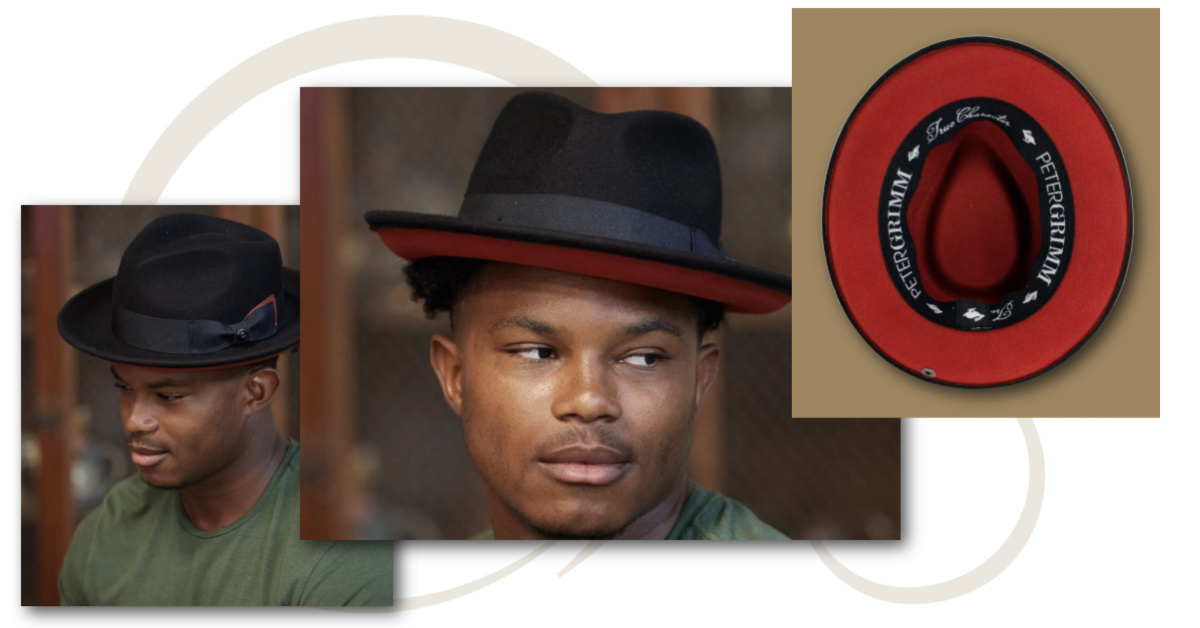
This fedora is a stylish addition to any hat collection.
Made from 100% wool felt, it features a 2.5″ brim and is finished with a grosgrain ribbon band and Peter Grimm pin. The black color with rust underbrim adds a touch of elegance.
As part of Peter Grimm’s collection, this fedora embodies the brand’s commitment to quality and style. Peter Grimm is known for creating hats that are both durable and fashionable, making them a great choice for anyone looking for a reliable and stylish accessory.


Hello Peter – Love your story (and I like some of your hats)- I used to buy a couple at a surplus place – no model #s so I can’t quote them and I can’t paste pics in here, but if you give me an email address I will send you the pics of them if you care, as well as a seasonal hat you might find inspiring for your current hat stable – it is a pressed felt hat with a metal tag near the band that says “Alpen Hat” – I’m older, so the grey color suits me, I feel. The sticker inside reads “EHG Bavarian Hat. Dry Clean Only. Felt Hat. German Gifts. I bought it at the Hoffbrau House in Las Vegas where I “live” one thirsty Sunday afternoon and I felt a bit of a sucker for paying what seemed like too much money for a hard-formed hat – like something from a Spirit Halloween store, right? Also, I’m not a classic German “round head” so it hits my head more front and back than on the sides, but since it’s hard formed I don’t want to get it misshapen – here’s a link to a similar version – (Removed) I like mine better, frankly, because it has the 2-color rope band with the red/white/grey-black/speckled feather arrangement that seems more “German country burgher” to me. Anyway, it might be a nice pop-fly for your seasonal collection, and being the hard-formed felt (w/o any ventilation holes) it would be seasonally warm – although not overly so, IMO. There are many versions online, but mine is hard-formed rather like a Canadian Mountie’s hat (think “Dudley Do-Right”) and when I wear it on the bus I imagine that people think me a European tourist, and I’m old enough (66 years young) to carry it off. So, for you, with the hat formed as felt hard shell and no liner (at least on this model), or even a hat band (another feature that made me feel like a bit of a sucker, price-wise, at least initially) there would have to be a good margin in it for you, methinks. So, Auf Weidersehen and R-I-I-k-o-L-A-A-H, Baby! p.s., If you get a chance to watch ‘Three Days Of The Condor’ with Robert Redford, you might dig the hat/coat combo Max Von Sydow’s character wears in the New York fall. Best Regards, and yes, (I have to say it) my hat’s off to you – Bruce Book
Please contact me by email, thank you